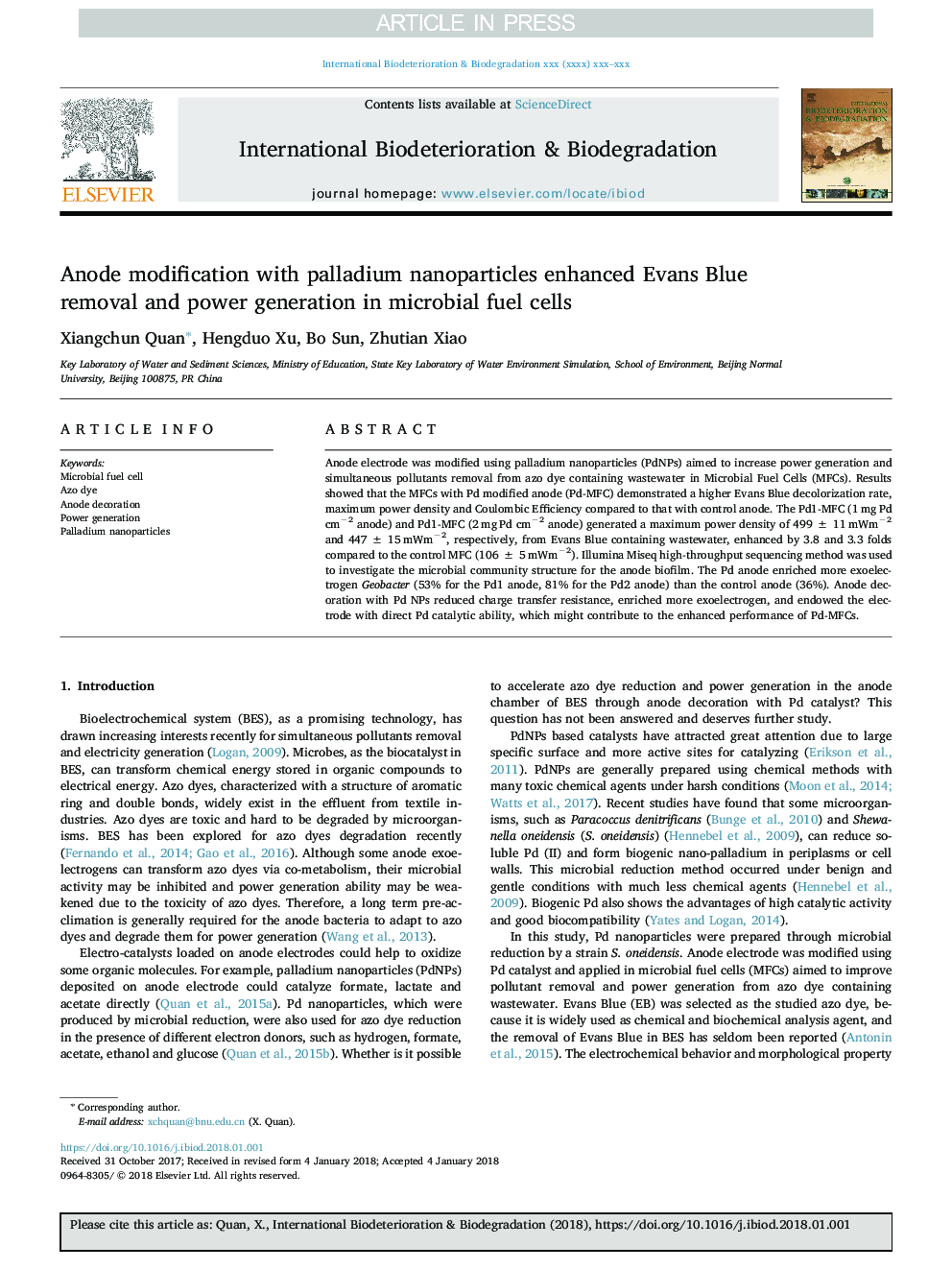| Article ID | Journal | Published Year | Pages | File Type |
|---|---|---|---|---|
| 8843740 | International Biodeterioration & Biodegradation | 2018 | 8 Pages |
Abstract
Anode electrode was modified using palladium nanoparticles (PdNPs) aimed to increase power generation and simultaneous pollutants removal from azo dye containing wastewater in Microbial Fuel Cells (MFCs). Results showed that the MFCs with Pd modified anode (Pd-MFC) demonstrated a higher Evans Blue decolorization rate, maximum power density and Coulombic Efficiency compared to that with control anode. The Pd1-MFC (1â¯mgâ¯Pd cmâ2 anode) and Pd1-MFC (2â¯mgâ¯Pd cmâ2 anode) generated a maximum power density of 499â¯Â±â¯11â¯mWmâ2 and 447â¯Â±â¯15â¯mWmâ2, respectively, from Evans Blue containing wastewater, enhanced by 3.8 and 3.3 folds compared to the control MFC (106â¯Â±â¯5â¯mWmâ2). Illumina Miseq high-throughput sequencing method was used to investigate the microbial community structure for the anode biofilm. The Pd anode enriched more exoelectrogen Geobacter (53% for the Pd1 anode, 81% for the Pd2 anode) than the control anode (36%). Anode decoration with Pd NPs reduced charge transfer resistance, enriched more exoelectrogen, and endowed the electrode with direct Pd catalytic ability, which might contribute to the enhanced performance of Pd-MFCs.
Related Topics
Life Sciences
Environmental Science
Environmental Science (General)
Authors
Xiangchun Quan, Hengduo Xu, Bo Sun, Zhutian Xiao,
